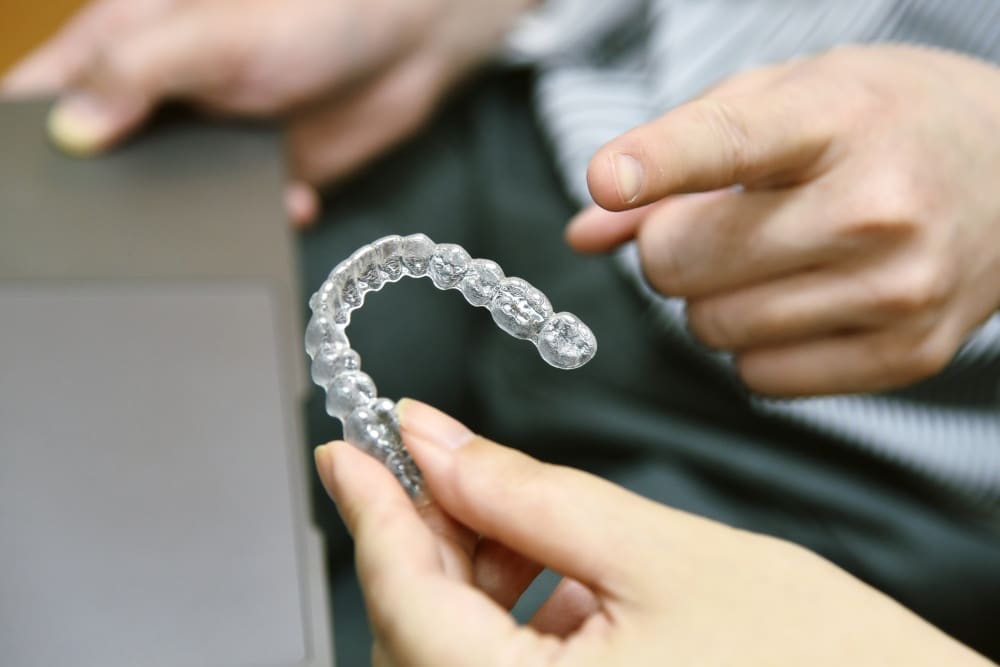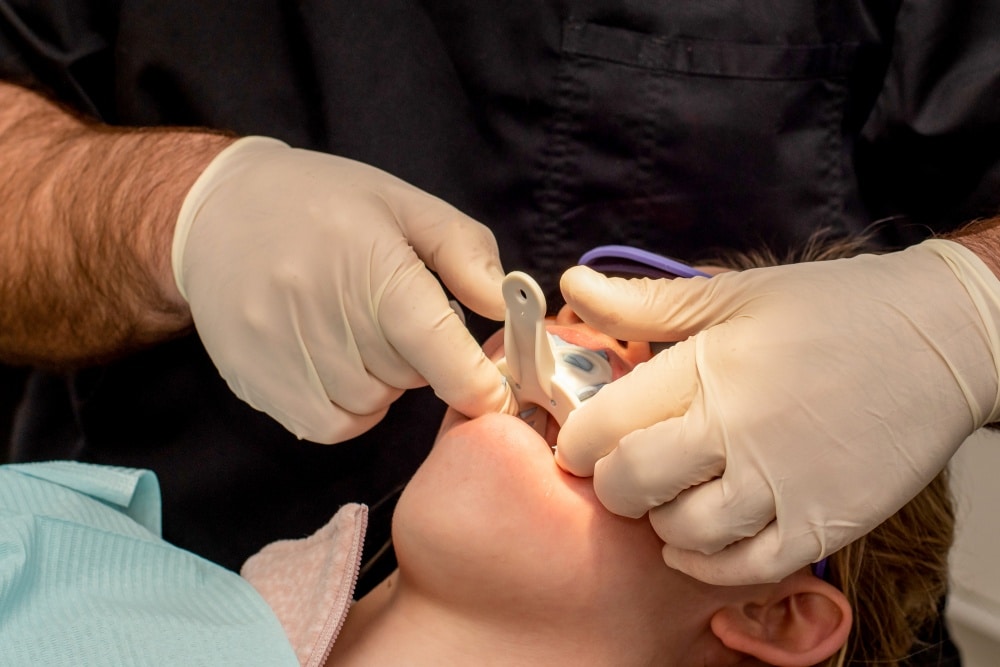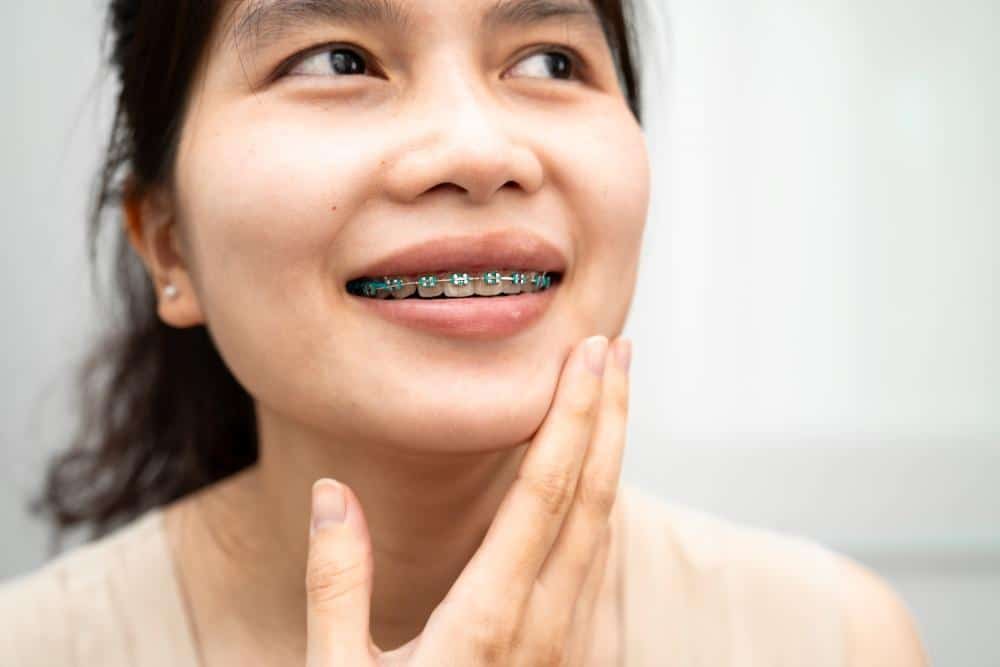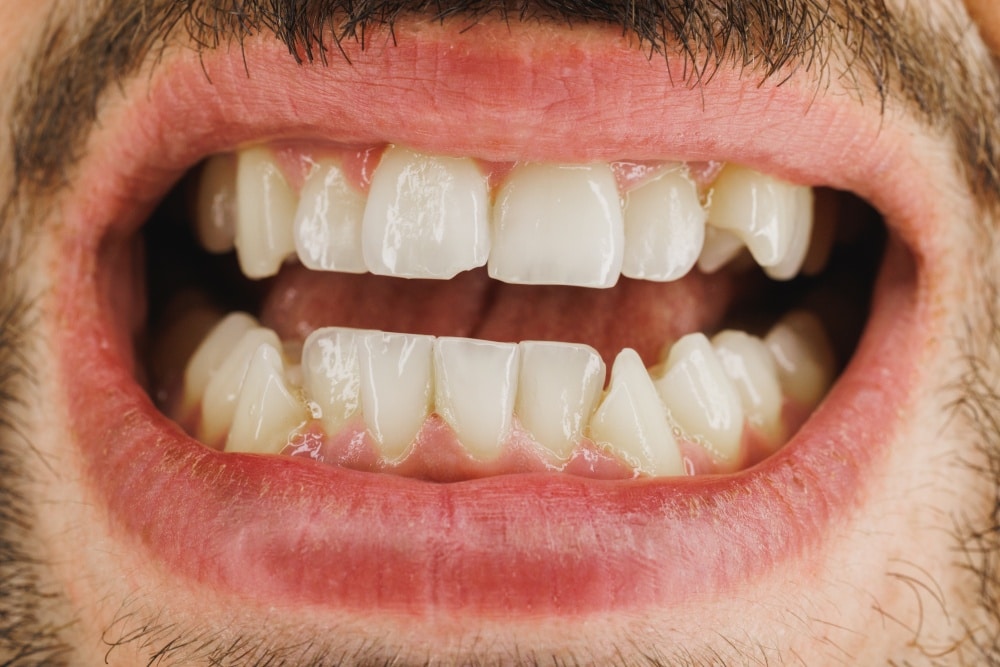
Can You Get Invisalign with a Crown?
If you’ve had dental work done—especially a crown—you might wonder if Invisalign is still an option.
The good news is yes, you can get Invisalign with a crown.
Invisalign is often chosen for its clear, removable aligners that offer a less visible alternative to metal braces. It works by gradually shifting teeth into better alignment using custom trays, designed to fit snugly over your teeth—including those with crowns. Still, there are a few important factors to consider, particularly around how the aligners interact with the crown itself.
Understanding Dental Crowns
When a tooth is damaged, weakened, or structurally compromised—perhaps after a root canal, due to a large filling, or from a fracture or severe wear—a dental crown offers a protective solution. This tooth-shaped cap is cemented over the existing tooth, effectively restoring its function, strength, and natural appearance.
While crowns cover the visible part of a tooth, they don’t anchor the tooth to the jawbone. This means that crowned teeth remain movable and can be guided into better alignment with Invisalign. So, even with one or more crowns, tooth movement is still possible—making clear aligners a viable treatment option.
Invisalign Treatment with Existing Crowns
Given the above, having dental crowns doesn’t rule you out from getting Invisalign. In most cases, the process of straightening crowned teeth is very similar to straightening natural ones. Invisalign aligners are custom-fitted to the exact shape of your teeth—crowns included—so they can move them gradually without interfering with the restoration.
Some Invisalign treatments require small, tooth-coloured attachments to help guide certain tooth movements. These attachments are usually bonded to the surface of the teeth, but bonding them to crowns can be a little more challenging. While the adhesive may not bond as well to porcelain or ceramic as it does to natural enamel, experienced dentists and orthodontists can adjust placement and materials to make it work.
In addition, compared to traditional braces, Invisalign offers an added benefit for those with crowns. This is because traditional metal brackets need to be cemented directly onto teeth, including those with crowns, which increases the risk of damage or loosening. With Invisalign, however, the removable aligners don’t require such attachments for every case—lowering the chance of crown-related issues during treatment.
Addressing Concerns About Invisalign and Crowns
Despite the fact that you can confidently pursue Invisalign with existing crowns, a common concern among patients is whether Invisalign aligners might dislodge a crown. Fortunately, as mentioned earlier, because the aligners are not bonded to your teeth and are designed to fit snugly over them, they won’t pull a crown off. Plus, the pressure applied during treatment is gradual and evenly distributed, making it gentle enough to be safe for both crowned and uncrowned teeth.
If a tooth needs a crown after you’ve already started Invisalign, it’s best to speak with your dentist before proceeding. This is because adding a crown mid-treatment can affect how your aligners fit. And in some cases, your dentist may advise delaying the crown placement until treatment ends, or your aligners may need to be adjusted or remade. Either way, clear communication helps ensure your aligners continue working as intended without compromising your dental work.
Invisalign with Other Dental Restorations
If you’ve had prior dental work—like veneers or implants—you might be wondering whether Invisalign is still an option. Since these aligners are custom-moulded to each tooth, it’s a valid concern for those with restorations. The good news is, in most cases, Invisalign can still be used effectively, but treatment may need to be adjusted depending on your specific dental situation.
Can You Get Invisalign with Dental Implants?

Invisalign can be used even if you have dental implants, though some planning is needed. Since implants are permanently fixed and do not move like natural teeth, they’re not influenced by the aligners. However, this doesn’t rule out Invisalign. Aligners can be designed to move the surrounding natural teeth while working around the fixed implant. For patients who haven’t received their implant yet, it’s often recommended to complete Invisalign treatment first, then proceed with implant placement once the desired alignment is achieved. If you already have one or two implants in non-critical alignment areas, Invisalign can often be adjusted to accommodate them without issue. It all comes down to having a clear treatment plan developed by your orthodontist.
Can You Get Invisalign with Veneers?
Invisalign can also work with dental veneers, though there are a few things to consider. Veneers are thin shells bonded to the surface of teeth, often used for cosmetic improvements. As long as the veneers are secure and healthy, clear aligners can fit comfortably over them and apply gentle pressure to the underlying teeth. That said, attachments—those small tooth-coloured bumps used to help guide tooth movement—may not adhere as well to veneers compared to natural enamel. If attachments are required on veneered teeth, your dentist will assess whether the bond is strong enough or explore alternatives. If you’re planning on getting veneers but also need orthodontic treatment, it’s usually best to complete Invisalign first. This way, your bite and alignment are properly addressed before any cosmetic restorations.
Should You Get a Crown or Invisalign First?
So, what comes first—the crown or Invisalign?
The answer depends on why the crown is needed. If it’s for cosmetic reasons, such as masking stains, chips, or minor imperfections, your dentist may recommend completing Invisalign treatment first. That way, the teeth are aligned properly before the crown is shaped and placed, ensuring a better fit and appearance.
However, if the crown is necessary to restore strength to a cracked, decayed, or structurally compromised tooth, it should take priority. Reinforcing the tooth ensures that it’s stable enough to withstand the movement forces from the aligners.
Either way, your dentist will assess the situation and guide the timing, but rest assured, both procedures can coexist successfully in a carefully planned treatment.
Limitations of Invisalign Treatment
While clear aligners are an effective option for many orthodontic issues, it’s not the right fit for every case. There are limitations, particularly for patients who require more intensive or complex corrections. Situations that may fall outside clear aligner’s scope include:
- Severe overbites or underbites
- Unusually shaped teeth that don’t allow aligner grip
- Significant spacing or very large gaps
- Teeth that need to be moved vertically (intrusion/extrusion)
- Complex rotations or tooth positioning
- Extensive prior dental work
If you’re dealing with complex dental concerns or have existing restorations like a dental implant and crown, it’s best to consult your provider to understand the feasibility. At Family Dental Centre, we’ll help you assess whether clear aligners are the right fit and guide your treatment plan every step of the way. Book your consultation today.



